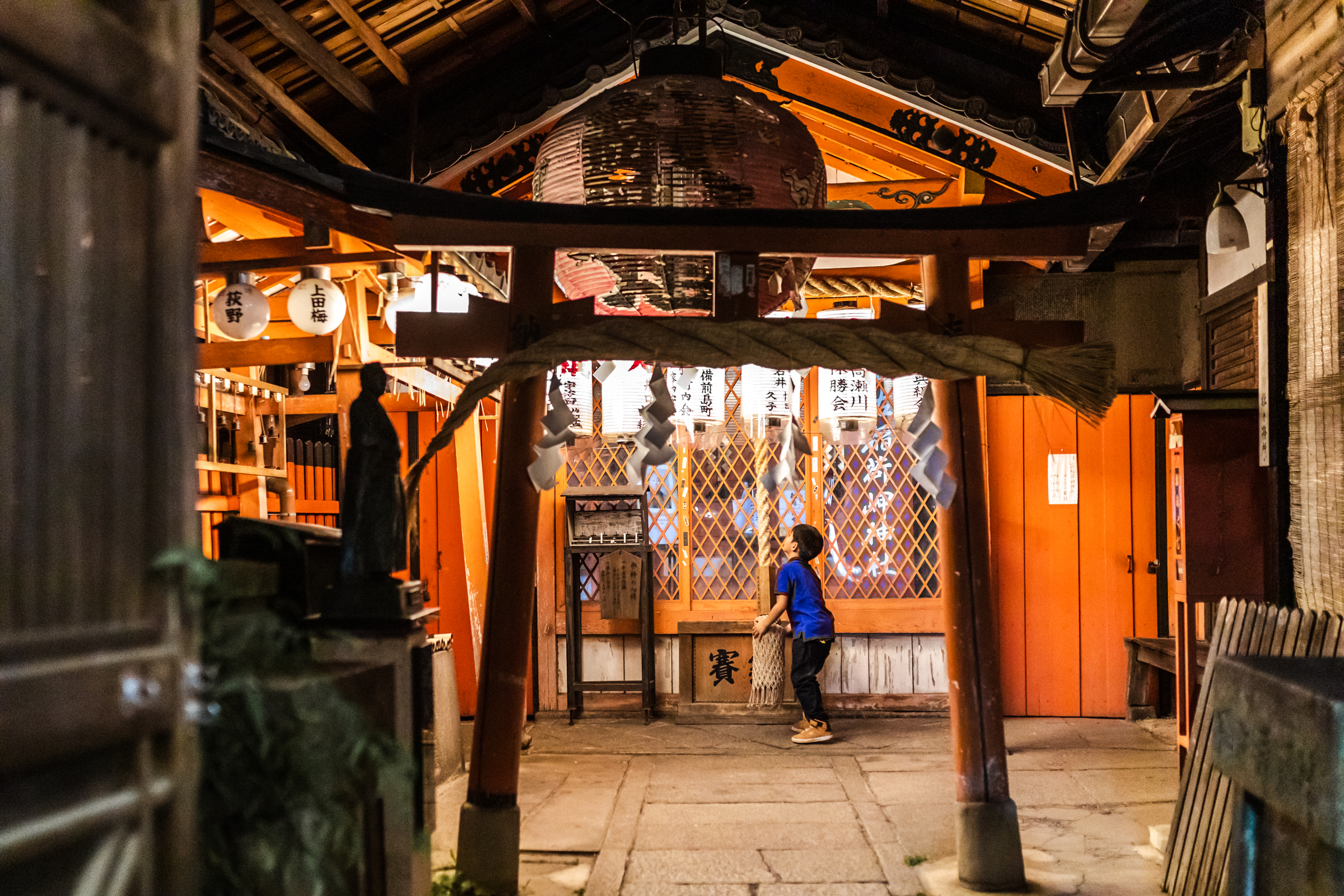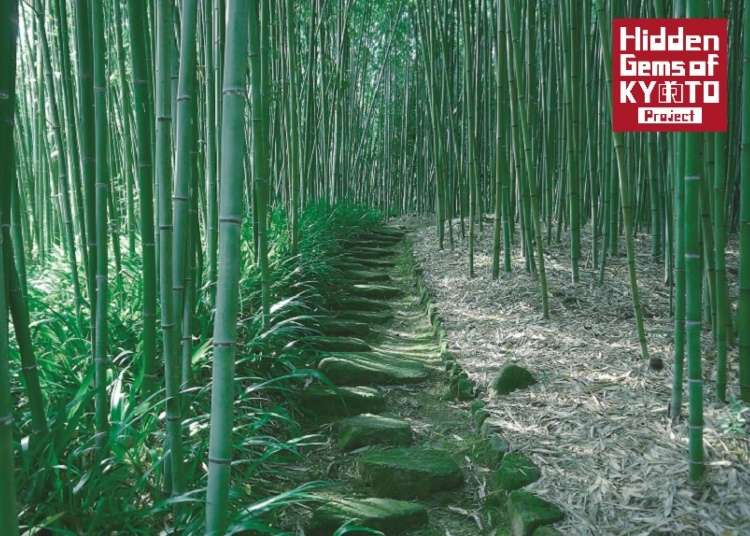
Early summertime in Kyoto is when the locals like to stretch their legs, go on hikes, and enjoy a picnic on the outskirts of the city. Another way of getting close to nature as the weather becomes gradually warmer is “forest bathing” in the verdant bamboo groves of Nishikyo-ku.
A fifteen-minute train ride west of central Kyoto, the Nishikyo-ku ward is one of Japan’s centers of bamboo growing. Most of Kyoto’s traditional bamboo crafts and building materials are made from bamboo grown in this area.
Furthermore, it is believed that Taketori Monogatari, or “The Tale of the Princess Kaguya,” Japan’s oldest prose narrative, was set in Nishikyo-ku. The story is about a baby girl discovered inside the stalk of a glowing bamboo plant, who matures into a beautiful woman and one day returns home to the moon, when her servants come for her on a full moon night in midsummer.
The most famous bamboo grove in Kyoto is undoubtedly the one located on the north of Arashiyama's Togetsukyo Bridge. However, this destination is almost always packed with people, and it’s impossible to get a feel of its true qualities in the hustle and bustle and the constant flow of tourists. So to truly experience the magic of a bamboo forest, venture a bit deep into the woods and explore other areas of Nishikyo-ku, the secret haven of Kyoto’s bamboo.
Arashiyama Monkey Park Iwatayama: Let loose with monkeys at the mountaintop
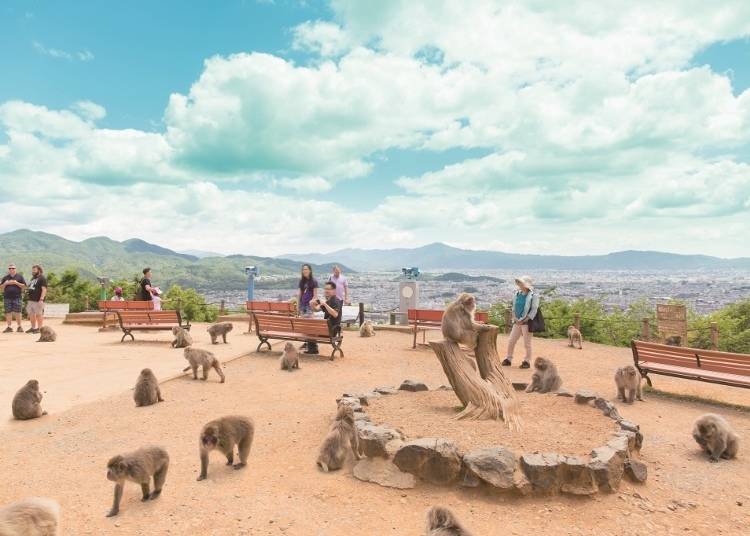
Nishikyo-ku is also where you’ll find Arashiyama, famously known for the timeless Togetsukyo Bridge and the Iwatayama Monkey Park. Free-ranging monkeys await visitors at the mountaintop, which is reached by a twenty-minute hike up a surprisingly tranquil trail. For a few hundred yen, you can buy a pack of snacks to feed the monkeys yourself from inside an enclosed rest area. The panoramic views of the city are also worth the hike uphill.
-
Iwatayama Monkey Park嵐山モンキーパークいわたやま
- Address 61 Arashiyama Nakaoshitacho, Nishikyo-ku, Kyoto 616-0004
-
Nearest Station
By JR Line: A 15-minute walk from Saga Arashiyama Station
By Hankyu Railway: A five-minute walk from Arashiyama Station
Opening Hours: 9:00 a.m. - 4:30 p.m. (The mountaintop park is open until 5:00 p.m.)
Admission: 550 yen for adults (high school students and older), 250 yen for children (junior high students and younger), Free for children under age 3Book an experience
Please check the partner website for details on the latest rates.
Jizo-in Temple: A transcendent Zen sanctuary known as the "bamboo temple"
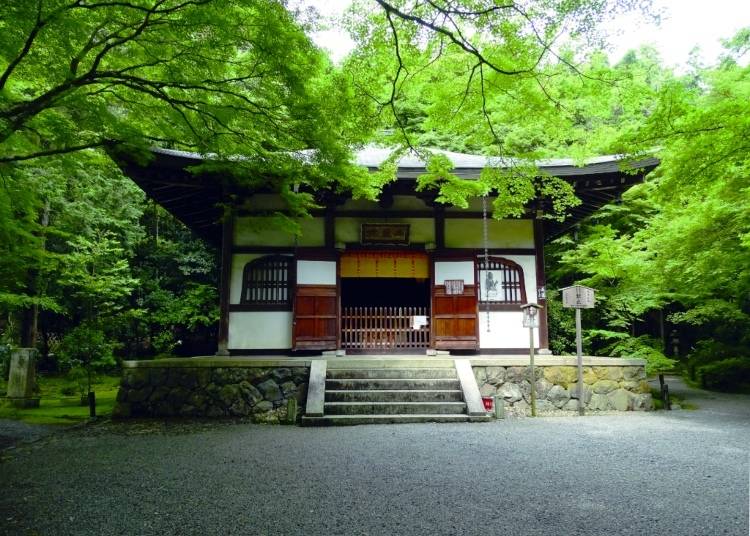
Built in the mid 14th century, this Rinzai sect temple is full of soaring stalks of bamboo which gave it its nickname. Jizo-in Temple is also where the Zen Buddhist monk Ikkyu, an historical figure famously depicted in Japanese anime, spent his childhood. Its gentle breeze, dappled sunlight, raindrops sparkling on tree branches, and the beautiful gradation of fresh greenery, moss, and bamboo are especially lush, luminous, and mesmerizing in the early summertime.

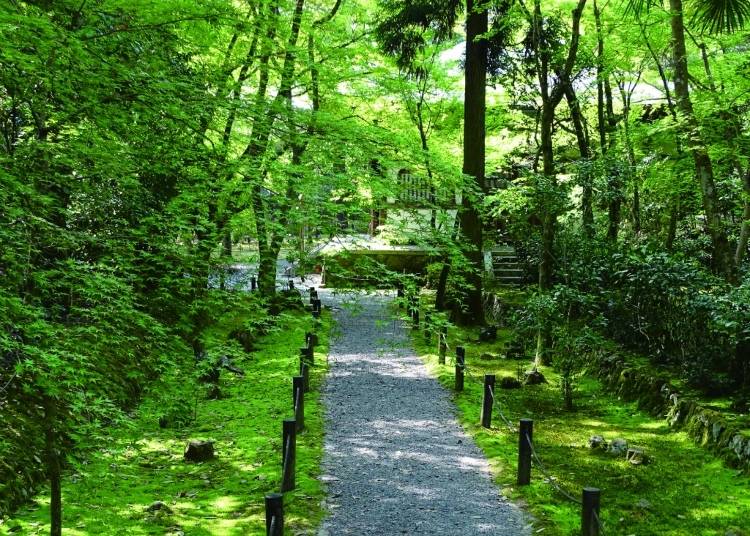
-
Jizo-in Temple竹の寺地蔵院
- Address 23 Yamadakitanocho, Nishikyo Ward, Kyoto, 615-8285
-
Nearest Station
By JR Line: From Kyoto Station, take the Kyoto bus #73 bound for Arashiyama Kokedera Suzumushidera. The temple is a 3-minute walk from the Kokedera bus stop.
By Hankyu Railway: A 12-minute walk from Kamikatsura Station
Opening Hours: 9:00 a.m. - 4:30 p.m. (Last entry by 4:15 p.m.)
Admission: 500 yen for adults and university students, 300 yen for high school students and younger
Website: http://takenotera-jizoin.jp/ (in Japanese only)
Kyoto City Rakusai Bamboo Park: A beautiful yet little-known hideaway
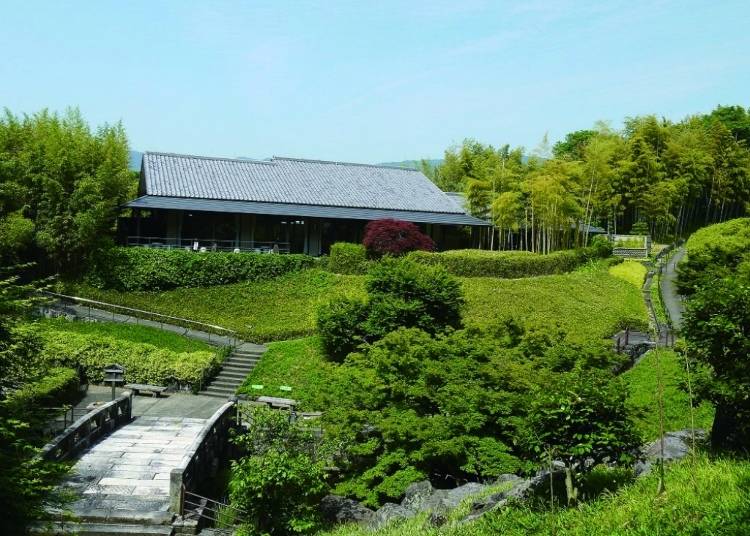
The boundary of the park is lined with bamboo plants along a serene and quintessentially Japanese-style path that stretches 1.8 kilometers. Still relatively unknown, it’s a place where visitors can breathe deeply the crisp, quiet air of a bamboo forest. The museum inside the park is an educational facility that showcases bamboo instruments and crafts, as well as historical bamboo artefacts, such as a lightbulb made by Thomas Edison with a bamboo filament sourced from Kyoto. The park features over a hundred varieties of bamboo gathered from across the country.

-
Kyoto City Rakusai Bamboo Park京都市洛西竹林公園
- Address 2 Chome-300-3 Oekitafukunishicho, Nishikyo Ward, Kyoto, 610-1112
-
Nearest Station
By JR Line: From Katsuragawa station, take the Kyoto City bus Toku Nishi 4. The park is a five-minute walk from the Minamifukunishicho (Chikurin Koen-mae) bus stop.
By Hankyu Railway: From Hankyu Katsura Station, take the Kyoto City bus Nishi 3 or Nishi 8. The park is a five-minute walk from the Minamifukunishicho (Chikurin Koen-mae) bus stop.
Opening Hours: 9:00 a.m. - 5:00 p.m. (Last entry by 4:00 p.m.)
Admission: Free
Website: http://www.rakusai-nt.com/tikurin/ (in Japanese only)
Hotel Kyoto Eminence Takenosato Onsen: Reinvigorate your body and soul after a full day of sightseeing
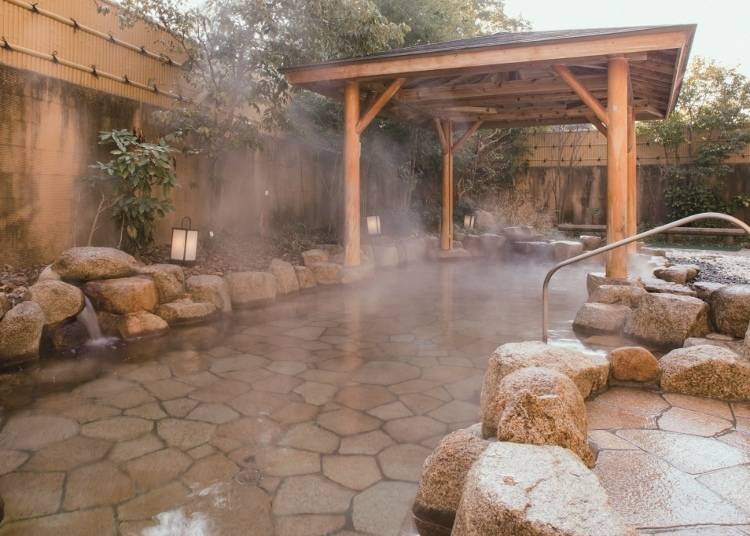
Takenosato Onsen is one of the few facilities in Kyoto City where visitors can dip into authentic natural hot spring baths. The Onsen’s tea different types of baths include a spacious indoor bath, an open-air bath, sauna, and jacuzzi. Although the onsen facility is built inside the Kyoto Hotel Eminence, even non-staying travelers are welcome to relax and soak away their tiredness in the warm baths. It’s the perfect oasis to relieve muscle tension and restore your energy at the end of a long day.
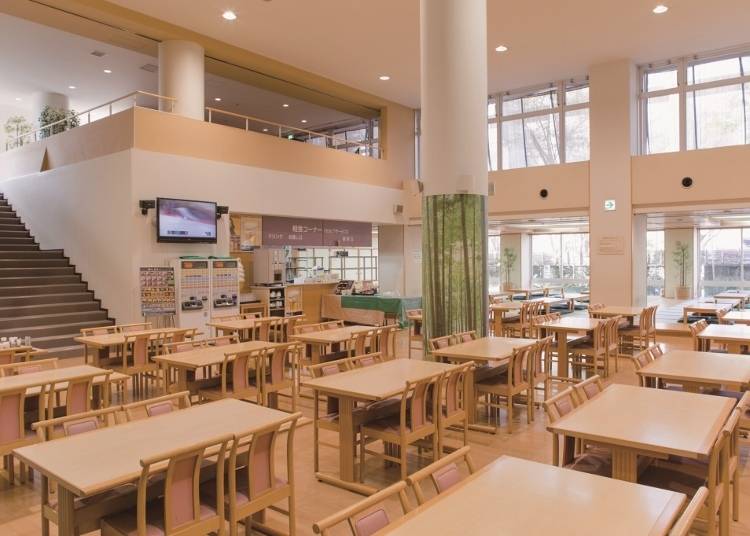
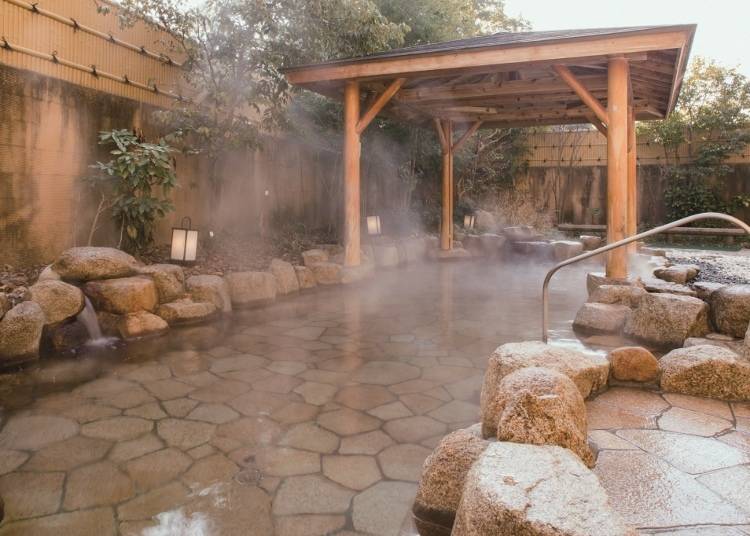
-
Hotel Kyoto Eminence京都竹の郷温泉 ホテル京都エミナース
- Address 2-4 Oharano Higashisakaidanicho, Nishikyo-ku, Kyoto 610-1143
-
Nearest Station
By JR Line: From Katsuragawa Station, take the Kyoto City bus Nishi 4 or Nishi 12A. The Onsen is a one-minute walk from the Sakaidani Ohashi bus stop.
By Hankyu Railway: From Hankyu Katsura Station, take the Kyoto City bus Nishi 1, Nishi 2, or Nishi 5. The Onsen is a one-minute walk from the Sakaidani Ohashi bus stop.
Opening Hours: 10:00 a.m. - 11:00 p.m. (Last entry by 10:00 p.m.)
Admission: 830 yen for adults and 520 yen for children on weekdays, 1,000 yen for adults and 620 yen for children on weekends and holidays, Free for children under age 3
Website: https://www.japanican.com/en/hotel/detail/6230052/
*Prices and options mentioned are subject to change.
*Unless stated otherwise, all prices include tax.
Recommended places for you
-

Kanzenkoshitsuyakinikutabehodai Gyugyu Paradise Sannomiya
Yakiniku
Kobe, Sannomiya, Kitano
-

Kambei Sannomiyahonten
Yakiniku
Kobe, Sannomiya, Kitano
-

To-ji Temple
Temples
Kyoto Station, To-ji Temple
-

Jukuseiniku-to Namamottsuarera Nikubaru Italian Nikutaria Sannomiya
Izakaya
Kobe, Sannomiya, Kitano
-
Goods

Yoshida Gennojo-Roho Kyoto Buddhist Altars
Gift Shops
Nijo Castle, Kyoto Imperial Palace
-

ISHIDAYA Hanare
Yakiniku
Kobe, Sannomiya, Kitano
-

What to Do in Osaka & Kyoto in April 2025: Enjoy Japan's Exciting Spring Events
by: Kaori Kimura
-

2025 Osaka-Kansai Expo: Convenient Tips for a Stress-Free Visit
by: Kaori Kimura
-

What to Eat and Buy at Expo 2025 Osaka–Kansai: Special Menus and MyakuMyaku Crafts
by: Kaori Kimura
-

A Special Stay at Hotel Okura Kyoto: Sakura and Gion Festival at Your Doorstep
by: Yotsuka Hizuki
-

Complete Guide to Kansai International Airport (KIX): Arrivals, Departures, Dining, Shopping & More
by: Kaori Kimura
-

Hyogo Prefecture Travel Guide: Top Sights from Mt. Rokko and Awaji Island to Himeji Castle
by: Kaori Kimura
Inspiration for Accommodations
-

Spacious Family Hotel in Namba: 20 Comfortable Stays for Family Fun
-

Charming Hotels to Enjoy the Spectacular Views of Arashiyama's Autumn Leaves from Your Room
-

Experience Stunning Views of Osaka Castle from Private Spaces: Top Hotels Near Osaka Castle
-

Recommended by Visitors! Arashiyama's Best-Rated Hotels
-

Family-Friendly Universal Studios Japan Hotel with Excellent Access
-

Enjoy a Comfortable Stay in Osaka! 10 Hotels with Convenient Airport Shuttle Services
-

Top 10 Recommended Hotels Near Namba Station with Great Access
-

Enjoy Night Views from Your Room! Recommended Hotels in Namba Area
-

Looking to Visit Kyoto in Winter? Here's Your Ultimate Guide to Kyoto Weather and Packing Essentials
by: WESTPLAN
-

8 Unfamiliar (But Totally Normal) Customs in Japan!
-

(2021) Top 5 Christmas Dinners in Osaka: Make Your Holiday Perfect This Festive Season!
by: Ran Tanaka
-

Osaka Koreatown: In Search of the Best Eats in the Korean Roots of Osaka's Tsuruhashi Market
-

5 Must-Visit Nara Temples and Shrines: Discover the Timeless Beauty of Japan's Ancient Capital
by: WESTPLAN
-

Gateway to Kobe: Enjoy hands-on fun at Koto-no-Hako Kobe!
- #best gourmet Osaka
- #things to do Osaka
- #what to do in kyoto
- #what to bring to japan
- #best gourmet Kyoto
- #new years in Osaka
- #what to buy in nanba
- #Visiting Osaka
- #onsen tattoo friendly arima
- #daiso
- #Visiting Kyoto
- #best japanese soft drinks
- #japanese fashion culture
- #japanese convenience store snacks
- #japanese nail trends
- Iwatayama Monkey Park嵐山モンキーパークいわたやま
- Jizo-in Temple竹の寺地蔵院
- Kyoto City Rakusai Bamboo Park京都市洛西竹林公園
- Hotel Kyoto Eminence京都竹の郷温泉 ホテル京都エミナース













